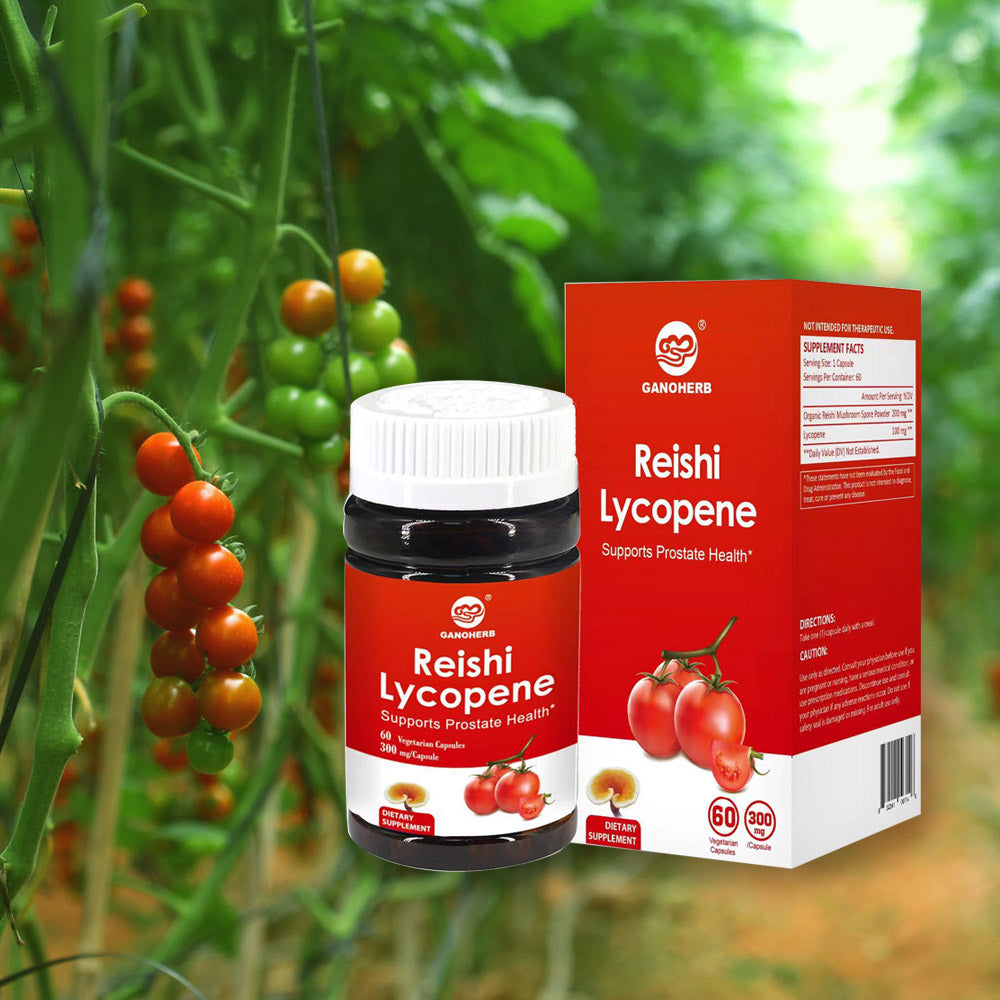Cacao and Reishi: A Deep Dive into Their Earthy Flavor Fusion and Cultural Journey
The world of botanical pairings offers unexpected harmonies, and few are as intriguing as the union of cacao and reishi. This combination brings together two ingredients revered for centuries on opposite sides of the globe: the tropical treasure of the cacao bean, foundational to chocolate, and the enigmatic, lacquered reishi mushroom (Ganoderma lucidum), a cornerstone of East Asian tradition. While often discussed elsewhere for other reasons, the true magic of cacao and reishi lies in their remarkable sensory synergy, rich cultural tapestries, and the innovative culinary expressions they inspire. This exploration delves into the essence of cacao and reishi, focusing on their flavor profiles, historical contexts, production processes, modern interpretations, and the unique experience they create together.

The Flavor Symphony: Why Cacao and Reishi Sing Together
At first glance, cacao and reishi might seem an unlikely duo. Cacao, in its purest form (think cacao nibs or unsweetened chocolate), offers a complex profile: deep, roasted notes reminiscent of coffee or nuts, inherent fruity acidity (ranging from red berries to citrus depending on origin), pronounced bitterness, and a distinct, rich chocolatey character underpinned by natural cocoa butter. Reishi, conversely, presents a powerful earthy, woody foundation, dominant clean bitterness often described as mineral-like, subtle umami (savory depth), and notes evoking damp forest floors, leather, or aged wood.
The fusion of cacao and reishi works because their intensities meet and mingle rather than clash. The deep roasted notes of cacao find a resonance in reishi’s earthiness, creating a profound, grounding base. The bitterness inherent in both ingredients is key – instead of doubling down harshly, they often harmonize. Cacao's fruity or acidic high notes can provide a surprising lift against reishi's deeper, sometimes monolithic profile, adding complexity. The natural fats in cacao (cocoa butter) also soften the potentially astringent edge of reishi, resulting in a smoother, more rounded mouthfeel in combined products like elixirs or dark chocolate bars. The result is a uniquely layered sensory experience: deeply earthy, robustly bitter yet balanced, with evolving notes of roast, forest, and subtle fruit or umami. It’s a sophisticated, acquired taste profile prized for its complexity and depth.
A Tale of Two Histories: Cultural Roots of Cacao and Reishi
The story of cacao and reishi is a narrative of two distinct cultural lineages converging in the modern era.
Cacao's Mesoamerican Legacy: For millennia in Mesoamerica (regions including modern-day Mexico and Central America), the cacao tree (Theobroma cacao, meaning food of the gods) held immense cultural, economic, and ritual significance. Ancient Maya and Aztec civilizations consumed cacao primarily as a bitter, frothy beverage, often flavored with spices like chili, vanilla, or annatto. It was integral to religious ceremonies, used as currency, and associated with vitality and prestige. The transformation of cacao into sweet chocolate bars is a relatively recent European adaptation.
Reishi's East Asian Reverence: Simultaneously, in ancient China, Japan, and Korea, the reishi mushroom (Ganoderma lucidum), known as Lingzhi or Mannentake, was shrouded in mystique and reverence. Its rarity in the wild contributed to its status as the Mushroom of Magic or auspicious mushroom, deeply embedded in Taoist philosophy and iconography as a symbol of good fortune, prosperity, spiritual attainment, and good fortune. It was consumed almost exclusively as a long-simmered, bitter tea, a practice demanding patience and respect. Emperors sought it, and it featured prominently in art and literature.
Modern Convergence: The deliberate pairing of cacao and reishi is a contemporary innovation. It represents a fascinating culinary experiment, merging the ancient ritualistic beverage traditions of Mesoamerica (bitter cacao drink) and East Asia (bitter reishi tea) into new forms. This fusion speaks to a modern fascination with global botanicals, complex flavors, and reinterpreting traditional ingredients in novel contexts. While not rooted in a shared ancient practice, the combination draws symbolic strength from the deep historical and cultural weight each ingredient carries independently.
From Bean and Bolete to Your Cup: Sourcing and Production
The journey of cacao and reishi from their origins to a combined product involves meticulous steps for each component:
Cacao's Path:
Cultivation: Cacao trees thrive in the humid tropics, within 20 degrees of the equator. Key growing regions include West Africa (Ivory Coast, Ghana), South America (Ecuador, Peru), and Southeast Asia (Indonesia). The trees produce large pods containing cacao beans surrounded by sweet pulp.
Harvest & Fermentation: Pods are harvested by hand. Beans and pulp are removed and fermented in boxes or heaps for several days. This critical step develops the beans' complex flavor precursors and reduces bitterness.
Drying: Fermented beans are sun-dried to reduce moisture content for storage and transport.
Roasting: Dried beans are roasted, a step that further develops chocolate flavor, reduces astringency, and makes the shells brittle.
Winnowing & Grinding: Shells are removed (winnowing). The remaining cacao nibs are ground into a thick paste called chocolate liquor (non-alcoholic), which contains both cocoa solids and cocoa butter.
Further Processing: For products like cocoa powder, the chocolate liquor is pressed to separate cocoa butter from the solids, which are then milled into powder. For chocolate, the liquor is refined, conched (agitated for smoothness), tempered, and molded.
Reishi's Path:
Cultivation: While wild reishi is rare, commercial cacao and reishi products rely on cultivated mushrooms. Ganoderma lucidum is grown on sterilized substrates like hardwood sawdust blocks or logs under controlled conditions for temperature, humidity, and light. Cultivation takes several months.
Harvesting & Cleaning: The mature, hard, lacquered conks (mushroom fruiting bodies) are harvested by hand and cleaned.
Drying: Essential for preservation and extraction. Reishi is thoroughly dried using air-drying or low-heat dehydrators, becoming extremely hard.
Processing for Use: Dried reishi is processed for inclusion:
Extraction: Often using dual extraction (water and alcohol) to capture a broad spectrum of compounds, resulting in a concentrated liquid that is then spray-dried or freeze-dried into powder.
Powdering: Dried reishi can be finely milled into powder (may contain insoluble chitin).
Integration: The reishi powder (typically extract powder for better solubility and flavor integration) is then combined with cacao components. This happens either:
At the Chocolate Making Stage: Blended into chocolate liquor or during refining/conching for reishi-infused chocolate bars.
For Beverages: Blended with cocoa powder or cacao paste to create instant cacao and reishi elixir mixes.
DIY: Added separately to hot cacao drinks.
Modern Expressions: How Cacao and Reishi Come Together
The fusion of cacao and reishi has inspired a range of creative culinary products, moving beyond simple powders:
Artisan Chocolate Bars: Perhaps the most celebrated form. Craft chocolate makers blend high-percentage dark chocolate (70% and above) with reishi extract powder. The deep bitterness and roasted notes of dark chocolate provide the perfect canvas for reishi's earthy, woody complexity. The result is a sophisticated, intensely flavored bar with a unique umami-tinged bitterness distinct from plain dark chocolate.
Ceremonial-Style Elixirs: Harking back to ancient beverage traditions, modern ceremonial blends combine ground cacao paste or high-quality cocoa powder with reishi powder (often dual extract), and sometimes complementary spices like cinnamon, cardamom, or chili. Marketed for mindful consumption, these blends are whisked into hot water or plant-based milk, creating a rich, frothy, deeply grounding drink emphasizing the cacao and reishi synergy.

Instant Hot Drink Mixes: For convenience, numerous brands offer soluble powders combining cocoa, reishi extract powder, natural sweeteners (like coconut sugar), and sometimes adaptogens or spices. Just add hot water or milk for a quick cacao and reishi beverage.
Culinary Ingredient Pairings: Adventurous chefs and home cooks experiment beyond sweets. Reishi powder can be incorporated into mole sauces alongside cacao, used in spice rubs for meats where its umami complements cacao's depth, or even added to savory baked goods, creating unexpected savory applications for the cacao and reishi combination.
Coffee Hybrids: Building on the popularity of reishi coffee, some blends now incorporate cacao or cocoa, creating a triple-layered beverage experience combining coffee, cacao, and reishi.
The Ritual and Sensory Experience of Cacao and Reishi
Consuming cacao and reishi, particularly in beverage form like elixirs, often transcends simple refreshment, evolving into a mindful ritual:
Preparation as Ceremony: The act of preparing a cacao and reishi elixir can be intentional. Warming the water or milk, carefully measuring the powder, whisking vigorously to create froth – these steps foster presence and anticipation, echoing the ceremonial roots of both ingredients.
Engaging the Senses: The experience begins visually with the deep, dark brown hue, often darker than regular hot chocolate. The aroma is complex: the familiar comforting roast of cacao intertwined with the profound earthiness and subtle woodiness of reishi. The first sip delivers the unique flavor fusion – the rich chocolatey body of cacao meeting the grounding, bitter-earth notes of reishi. The mouthfeel is typically rich and smooth, sometimes slightly thicker than standard hot cocoa due to the cacao paste and reishi components.
Mindful Consumption: The distinct, robust, and complex flavor profile of cacao and reishi demands attention. It’s not a drink to gulp down. The combination encourages slow sipping, savoring the evolving layers of flavor, the interplay of bitterness and depth, and the unique sensation it creates. This mindful approach allows the drinker to fully appreciate the sensory journey.
Creating Atmosphere: Often associated with relaxation or introspection, consuming cacao and reishi is frequently paired with quiet moments – meditation, journaling, reading, or simply taking a mindful pause in the day. The deep, grounding nature of the flavors contributes to a sense of calm and presence.
Shared Experience: Like traditional cacao ceremonies, sharing a pot of cacao and reishi elixir can become a social ritual, fostering connection and conversation over the shared experience of its unique and intriguing taste.
The Enduring Allure of an Earthy Fusion
The pairing of cacao and reishi is a compelling testament to culinary innovation and the enduring appeal of deep, complex flavors. It successfully bridges the historical and cultural chasm between Mesoamerican cacao traditions and East Asian reverence for the reishi mushroom, creating something entirely new and modern. The core of its appeal lies in the remarkable sensory alchemy: the way cacao's roasted depth and inherent bitterness harmonize with reishi's profound earthiness and clean mineral-like bitterness, creating a uniquely layered and grounding taste experience.
Understanding the journey of both ingredients – from tropical cacao farms and carefully controlled reishi cultivation facilities through intricate processing steps – adds depth to the appreciation of each cup or chocolate bar. The modern expressions, from sophisticated dark chocolate bars to convenient elixir mixes and ceremonial beverages, demonstrate the versatility of this fusion. Ultimately, cacao and reishi offer more than just a novel flavor; they offer an experience. Whether enjoyed as a moment of mindful solitude, a shared ritual, or simply as a sophisticated culinary adventure, this combination invites us to slow down, engage our senses fully, and savor the deep, resonant harmony of two extraordinary gifts from the natural world. It’s a fusion that continues to captivate palates seeking complexity and depth beyond the ordinary.











